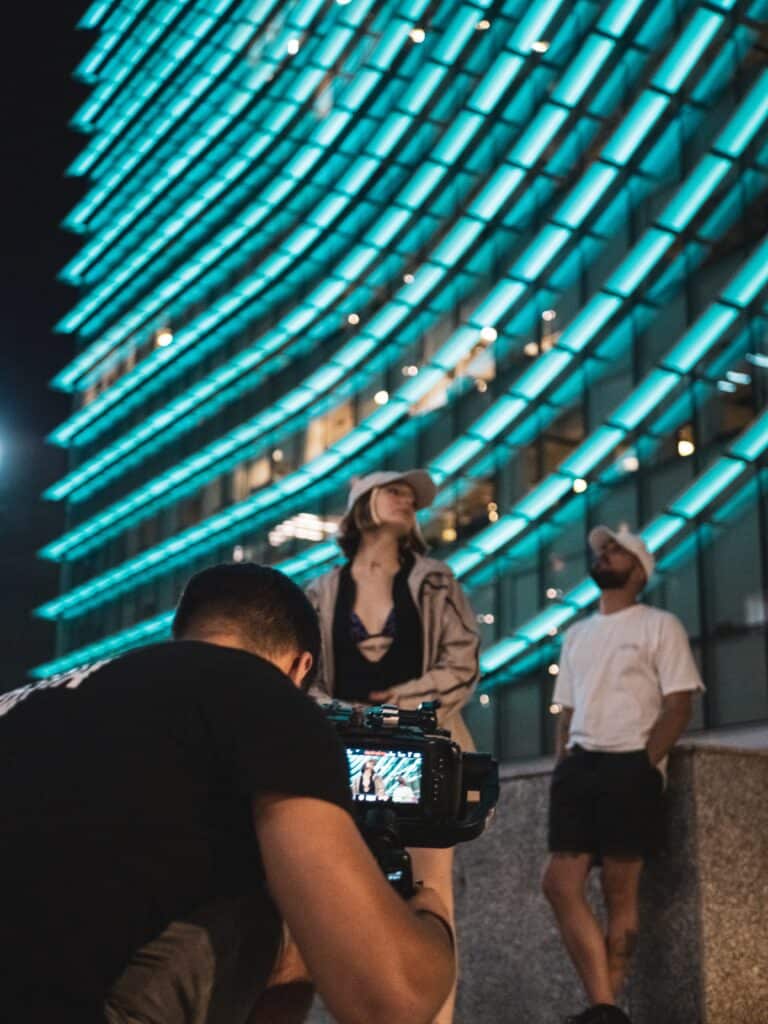Videos To Help You Create An Impressive Film Website
Website Portfolio Tips for Filmmakers
Whether you specialize in a narrative, avant-garde, or documentary film style, all filmmakers need a portfolio website that elevates their work and supports their business.

Strategies for Creating a Film Portfolio Website
This video focuses on strategies for building a film portfolio website, catering to directors, DPs, and other film-based creatives. The key factors discussed include selecting the appropriate page type for showcasing videos, making the video the centerpiece of the page, using embedded videos in gallery pages or creating custom pages for more flexibility, linking projects using collection pages with animated GIFs for added motion, adding context to projects through explainer copy, images, and other media to guide the viewing experience, utilizing text captions and text elements within gallery feeds for additional information, and utilizing custom pages for Contact, CV, and case studies with attention to mobile display.
Tips and Tricks From a Director: Peter Naylor
This video provides tips and tricks for building a film portfolio website, using Peter Naylor’s website as an example. The key strategies discussed include using a combination of gallery pages and custom pages to create varied layouts, utilizing embedded and hosted videos for showcasing film work, annotating projects with text and stills to provide context and engage visitors, arranging the site menu to tell a story of skills and experience, organizing projects into a collection page for a comprehensive overview, and utilizing unique SEO data for each video on its own page. The video emphasizes the importance of effectively representing film work, providing context, and creating a visually pleasing and user-friendly experience for visitors to the portfolio website.
Create A Custom Page
This video serves as an introduction to custom pages, highlighting their versatility and media options. Custom pages allow users to create unique layouts separate from the site theme and offer various media options such as hosted videos, live Instagram feeds, slideshow carousels, and mailing lists. The video explains that custom pages can be started from scratch or using customizable templates provided by the design team. It provides tips for maximizing the functionality of custom pages, including utilizing image sets for galleries with different layouts, customizing text styles and typography settings, setting aspect ratios for images, adding links to images, and checking the page’s appearance in both full view and mobile view.
The Importance of an About Me Page on Your Site
In this video, Stanzie from Format discusses the importance of the “About Me” page on a portfolio website and provides tips for creating a compelling bio. The “About Me” page is often the most-visited page on a website, as it offers visitors context about the artist, their intentions, goals, and services. Instead of relying solely on CVs or resumes, crafting a strong “about me” statement is recommended, showcasing the person behind the work. Stanzie suggests several steps to follow for an effective “about me” page, including introducing oneself, setting the right tone based on the target audience, listing awards and accolades, adding personal details to create a more complete introduction, including a representative photo, and proofreading and editing to ensure professionalism.
Use your Format Account to Create Online Submissions
This video emphasizes the importance of using a Format account for private online submissions and project sharing. It highlights the advantages of creating a private page on one’s website instead of attaching images to an email. The “not in menu” section of the site allows for the creation of a page with a private URL specifically for submissions. Both gallery and custom pages can be used for this purpose, with custom pages offering more options for text formatting and incorporating varied media. The video provides guidance on filling out the submission page, including adding an opening statement, contact information, image and text blocks, image galleries with captions, hosted or embedded videos, and a closing statement. The option to add password protection for added security is also mentioned.